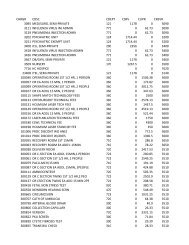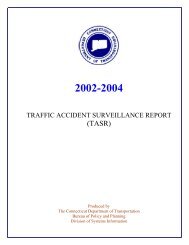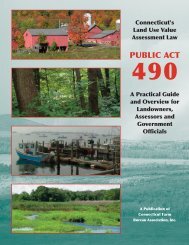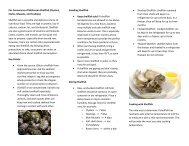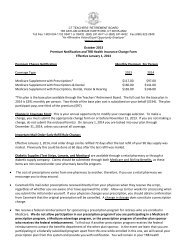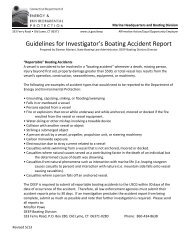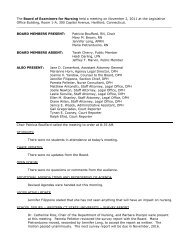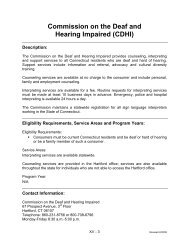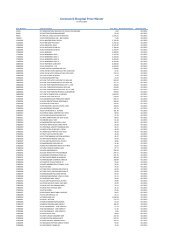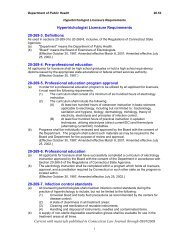The Connecticut Motorcycle Operator's Manual - CT.gov
The Connecticut Motorcycle Operator's Manual - CT.gov
The Connecticut Motorcycle Operator's Manual - CT.gov
Create successful ePaper yourself
Turn your PDF publications into a flip-book with our unique Google optimized e-Paper software.
In general, there is no single best<br />
position for riders to be seen and to<br />
maintain a space cushion around the<br />
motorcycle. No portion of the lane need<br />
be avoided — including the center.<br />
Position yourself in the portion of<br />
the lane where you are most likely to<br />
be seen and you can maintain a space<br />
cushion around you. Change position<br />
as traffi c situations change. Ride in path<br />
2 or 3 if vehicles and other potential<br />
problems are on your left only. Remain<br />
in path 1 or 2 if hazards are on your<br />
right only. If vehicles are being operated<br />
on both sides of you, the center of the<br />
lane, path 2, is usually your best option.<br />
<strong>The</strong> oily strip in the center portion<br />
that collects drippings from cars is<br />
usually no more than two feet wide.<br />
Unless the road is wet, the average<br />
center strip permits adequate traction<br />
to ride on safely. You can operate to<br />
the left or right of the grease strip and<br />
still be within the center portion of the<br />
traffi c lane. Avoid riding on big buildups<br />
of oil and grease usually found at busy<br />
intersections or toll booths.<br />
Following Another Vehicle<br />
17<br />
LANE POSITIONS<br />
“Following too closely” could be a<br />
factor in crashes involving motorcyclists.<br />
In traffi c, motorcycles need as much<br />
distance to stop as cars. Normally, a<br />
minimum of two seconds distance<br />
should be maintained behind the vehicle<br />
ahead.<br />
To gauge your following distance:<br />
• Pick out a marker, such as a<br />
pavement marking or lamppost, on<br />
or near the road ahead.<br />
• When the rear bumper of the<br />
vehicle ahead passes the marker,<br />
count off the seconds: “onethousand-one,<br />
one-thousand-two.”<br />
• If you reach the marker before<br />
you reach “two,” you are following<br />
too closely.<br />
A two-second following distance<br />
leaves a minimum amount of space to<br />
stop or swerve if the driver ahead stops<br />
suddenly. It also permits a better view of<br />
potholes and other hazards in the road.<br />
A larger cushion of space is needed<br />
if your motorcycle will take longer




